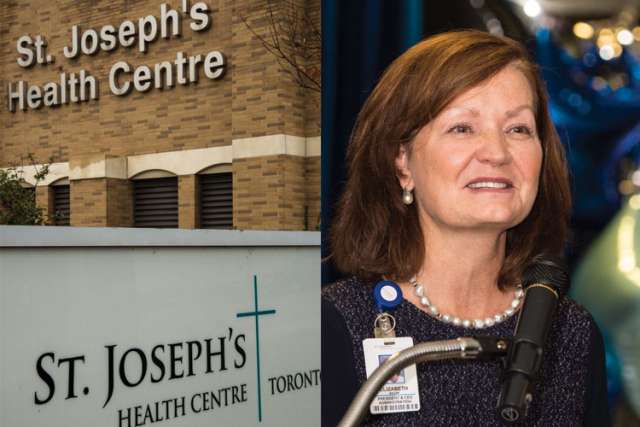The 93-year-old Catholic hospital launched a strategic plan Oct. 15 to guide its 2,500 employees, 400 doctors and 300 volunteers through to 2020. The 400-bed hospital serving 500,000 people in Toronto’s west end plans to extend the legacy of the Sisters of St. Joseph with more personalized care and more education programs for both hospital staff and patients, said president and CEO Elizabeth Buller.
The plan is the product of more than a year of consultations with staff and the surrounding community and should transform the hospital into “what a health care system in a local community can and should be,” said Andy Harris-Cartwright from the community reference panel that contributed to the report.
Buller said she was confident the hospital would improve the lives of patients because of the values and skills of its staff.
“Everyone, from the doctors to our volunteers, has a compassionate heart and a moral compass,” Buller said. “I see it each and every day.”
Goals outlined in the 24-page plan are the means “to continue living the mission of the Sisters of St. Joseph, but we can’t do it alone,” Buller said.
All the talk of the mission and values of the sisters isn’t just pious babble, said interim emergency room chief Dr. Agustino Bellisimo. The values that push St. Joe’s to always consider the most vulnerable come from the immigrants with two jobs, no English and no family doctor who regularly come through the emergency room doors, Bellisimo said. The Catholic values of the hospital aren’t theoretical, but the only sane and effective way of extending care in a community.
“We’re dealing with the people we should be dealing with. The patients we serve are really needy patients,” Bellisimo said.
Bellisimo is pushing to change the name of his department to the “Emergency and Access” department. He’s tired of people who scold patients for wasting expensive emergency room resources on the flu, alcoholism and cholicy babies. Sure there are repeat visitors with problems that should be dealt with by family doctors or public health nurses. But if the hospital doesn’t address the reasons why they keep showing up, they can’t blame the patients, he said.
In the strategic plan, Bellisimo’s department has committed to ensuring that every patient who shows up is connected to appropriate care for immediate follow-up — whether it's the next day or the next week. If the hospital can connect patients to the health services they really need, there’s a good chance St. Joe’s will cut down on repeat users of the emergency room and improve its wait times, Bellisimo said.
Bellisimo’s concentration on “linkages” to help patients get the right care fits in with St. Joe’s plans to help patients “co-design their own care path,” said vice president of quality and strategy Mike Heenan.
A focus on patient education should help people navigate the health care system and make good decisions about what care they need, Heenan said.
“We’re here to help people at their most vulnerable,” Heenan said. “We’re living the mission of the sisters.”


